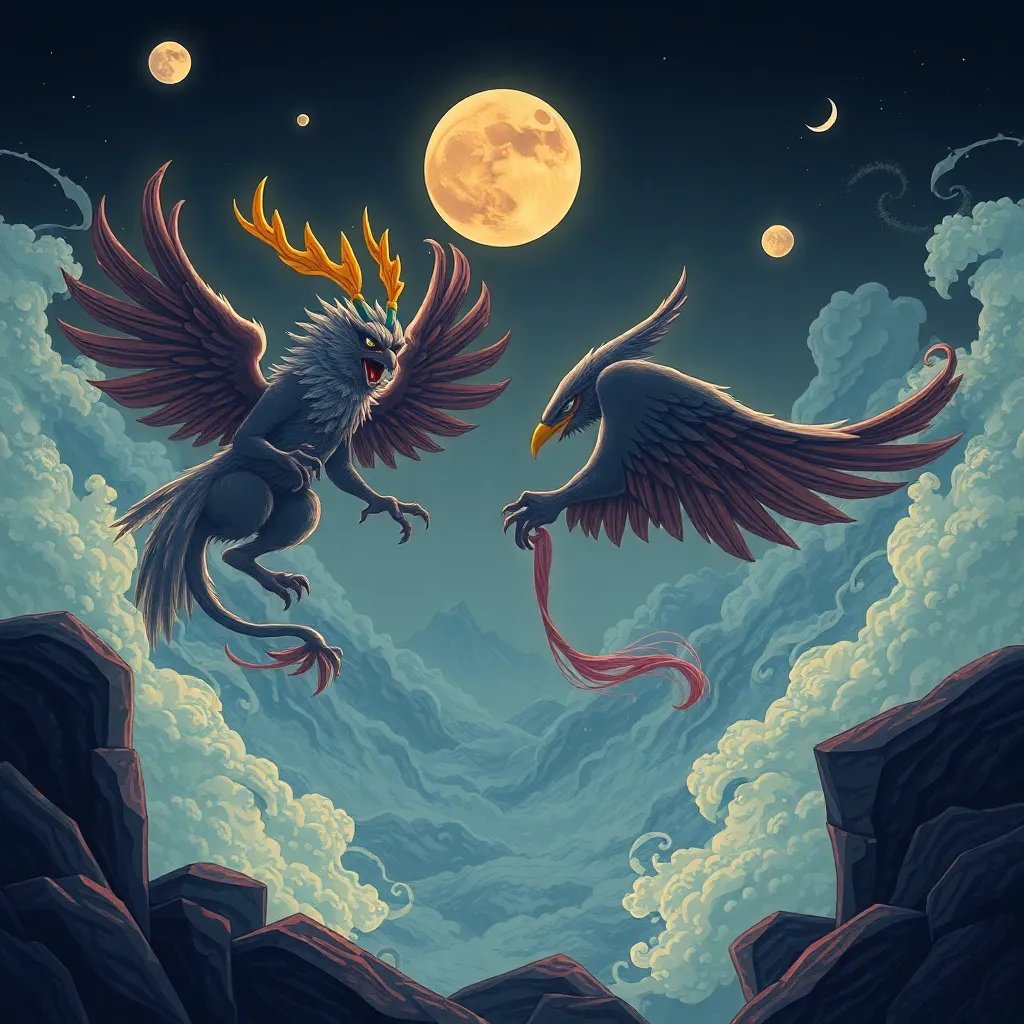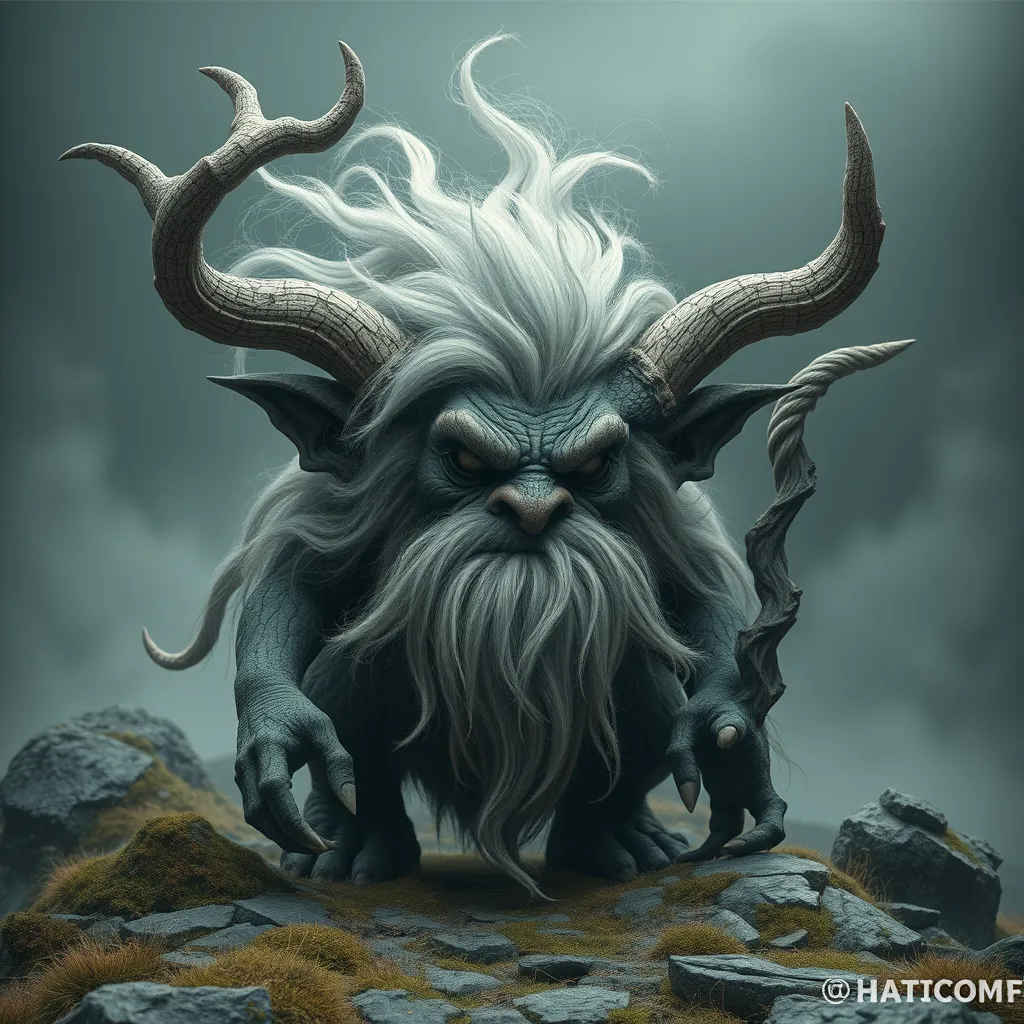Tengu Tales: From Mountain Guardians to Mischievous Tricksters
I. Introduction to Tengu
Tengu are mythical creatures deeply embedded in Japanese folklore, characterized by their bird-like features and human traits. These beings are often depicted with red faces, long noses, and the ability to fly, embodying a complex mix of characteristics that range from benevolent protectors to mischievous troublemakers.
The origins of Tengu can be traced back to ancient Buddhist texts and indigenous Japanese beliefs, where they were initially seen as spirits of the mountains and forests. Over time, their representation evolved, intertwining with Shinto beliefs and becoming a significant part of Japanese cultural mythology.
This article aims to explore the dual nature of Tengu, examining their role as both guardians of the mountains and playful tricksters, and how these characteristics have shaped their place in Japanese culture and beyond.
II. The Historical Roots of Tengu
The history of Tengu is rich and layered, with early mentions found in ancient texts such as the “Nihon Shoki” and various oral traditions. Initially, Tengu were seen as protectors of the forests and mountains, but their characteristics evolved significantly over the centuries.
Influences from both Buddhism and Shinto have played a crucial role in shaping the image of Tengu. In Buddhist texts, Tengu were often regarded as guardians of the Dharma, while in Shinto, they were associated with kami (spirits) of the mountains.
Regional variations of Tengu exist across Japan, with each area presenting unique interpretations:
- Kantō Region: Tengu are often depicted as fierce warriors.
- Kinki Region: They are seen more as protectors of the land.
- Shikoku: Tengu folklore includes tales of their benevolence towards travelers.
III. Tengu as Mountain Guardians
Tengu are frequently revered as guardians of the mountains, embodying the spirit of nature itself. They are believed to protect sacred sites and help maintain the balance of the ecosystem.
Symbolically, Tengu represent the harmony between humanity and the natural world, serving as reminders of respect towards nature. Their stories often emphasize their protective role:
- Legends of Tengu saving lost travelers from perilous paths.
- Stories of Tengu intervening during natural disasters.
- Anecdotes where Tengu provide wisdom to local villagers.
IV. The Trickster Archetype of Tengu
In addition to their guardian roles, Tengu are equally known for their trickster nature. These mischievous beings enjoy playing pranks on unsuspecting humans, often leading them into humorous or challenging situations.
Some of the most famous tales illustrating Tengu’s trickster characteristics include:
- The tale of a Tengu who disguises itself as a monk, only to confuse and trick travelers.
- A story where a Tengu steals a sword from a samurai, leading to an elaborate chase.
- Legends of Tengu teaching humility through clever tricks.
These tales carry moral lessons, often highlighting the importance of humility, respect, and the unpredictability of nature.
V. Tengu in Art and Literature
The artistic representation of Tengu in traditional Japanese art is rich and varied. From woodblock prints to paintings, Tengu have been depicted in numerous forms, often showcasing their dual nature.
In modern literature and pop culture, Tengu have continued to thrive. Their influence can be seen in:
- Anime: Characters inspired by Tengu often embody their mischievous traits.
- Manga: Tengu stories are a popular theme, featuring their adventures and moral lessons.
- Video Games: Many games include Tengu as characters, often with unique powers and abilities.
This ongoing representation highlights the adaptability of Tengu in contemporary narratives, making them relevant to new generations.
VI. Tengu Festivals and Cultural Celebrations
Throughout Japan, various festivals celebrate Tengu, reflecting their significance in local culture. These festivals often involve rituals, performances, and community gatherings.
Some notable aspects of Tengu festivals include:
- Tengu Matsuri: Celebrations in regions like Kyoto, honoring Tengu with parades and rituals.
- Local customs: Rituals that involve offerings to Tengu to ensure protection and blessings.
- Contemporary practices: Events that blend traditional beliefs with modern festivities, attracting both locals and tourists.
These cultural celebrations showcase the enduring respect and fascination with Tengu in Japanese society.
VII. The Modern Perception of Tengu
In contemporary Japan, Tengu have transitioned from fearsome mythical beings to cultural icons. Their image has softened, and they are now often celebrated as symbols of wisdom and nature.
The perception of Tengu has shifted significantly:
- Where once they were feared, they are now embraced in popular culture.
- Tengu serve as mascots for various local festivals and events.
- They are featured in global pop culture, expanding their reach beyond Japan.
This evolution reflects a broader trend of reinterpreting folklore in light of modern values and attitudes.
VIII. Conclusion
The dual nature of Tengu as both guardians and tricksters encapsulates the rich tapestry of Japanese folklore. Their stories not only entertain but also impart valuable lessons about respect for nature and the importance of humility.
The enduring legacy of Tengu highlights their significance in understanding cultural narratives, bridging ancient beliefs with contemporary values. As both guardians of the mountains and mischievous tricksters, Tengu continue to captivate the imagination, reminding us of the complex relationship between humanity and nature.



